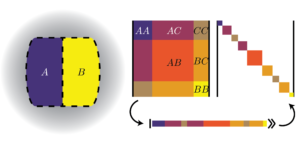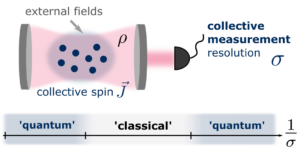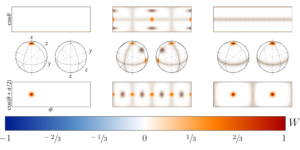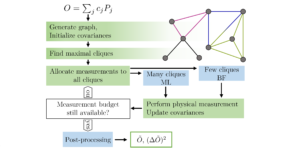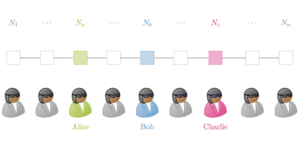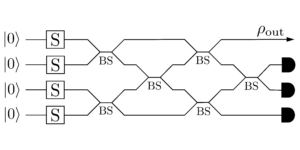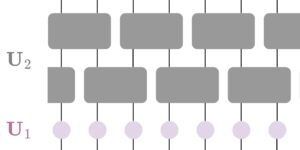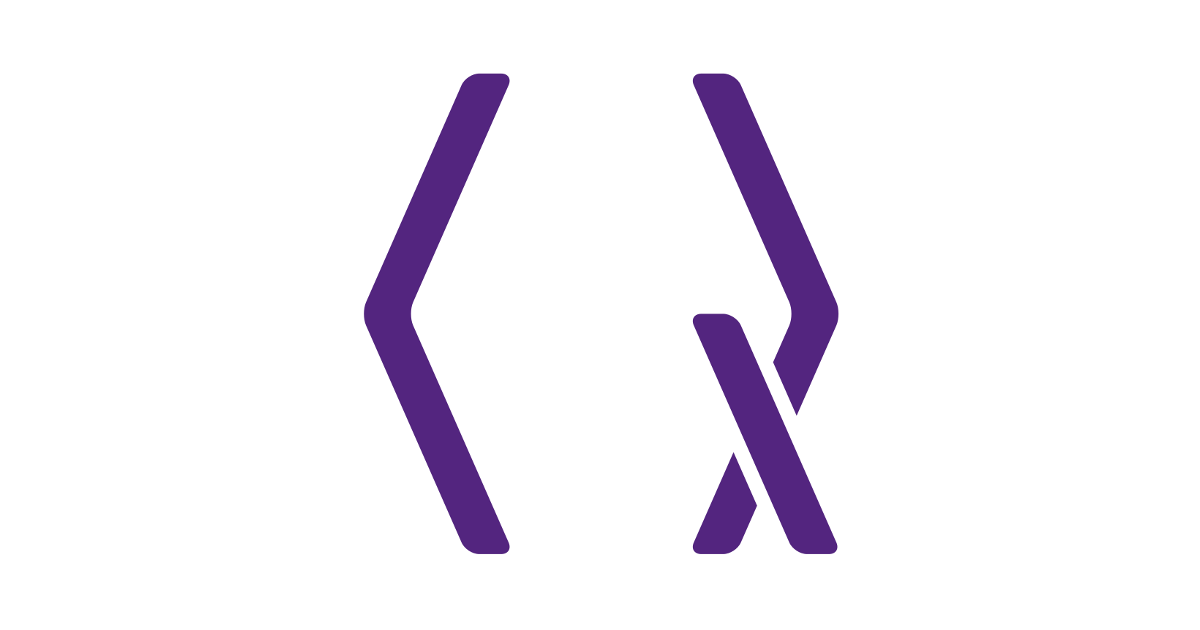
1Quantinuum, Terrington House, 13-15 Hills Road, Cambridge CB2 1NL, UK
2Quantinuum K.K., Otemachi Financial City Grand Cube 3F, 1-9-2 Otemachi, Chiyoda-ku, Tokyo, Japan
3Materials Informatics Initiative, RD Technology & Digital Transformation Center, JSR Corporation, 3-103-9, Tonomachi, Kawasaki-ku, Kawasaki, 210-0821, Kanagawa, Japan.
Find this paper interesting or want to discuss? Scite or leave a comment on SciRate.
Abstract
In this paper, we present a quantum computational method to calculate the many-body Green’s function matrix in a spin orbital basis. We apply our approach to finite-sized fermionic Hubbard models and related impurity models within Dynamical Mean Field Theory, and demonstrate the calculation of Green’s functions on Quantinuum’s H1-1 trapped-ion quantum computer. Our approach involves a cumulant expansion of the Lanczos method, using Hamiltonian moments as measurable expectation values. This bypasses the need for a large overhead in the number of measurements due to repeated applications of the variational quantum eigensolver (VQE), and instead measures the expectation value of the moments with one set of measurement circuits. From the measured moments, the tridiagonalised Hamiltonian matrix can be computed, which in turn yields the Green’s function via continued fractions. While we use a variational algorithm to prepare the ground state in this work, we note that the modularity of our implementation allows for other (non-variational) approaches to be used for the ground state.
► BibTeX data
► References
[1] A.L. Fetter and J.D. Walecka. “Quantum theory of many-particle systems”. Dover Books on Physics. Dover Publications. (2003).
[2] Dorothea Golze, Marc Dvorak, and Patrick Rinke. “The GW compendium: A practical guide to theoretical photoemission spectroscopy”. Frontiers in Chemistry 7 (2019).
https://doi.org/10.3389/fchem.2019.00377
[3] D. Sénéchal, D. Perez, and M. Pioro-Ladrière. “Spectral weight of the hubbard model through cluster perturbation theory”. Phys. Rev. Lett. 84, 522–525 (2000).
https://doi.org/10.1103/PhysRevLett.84.522
[4] David Sénéchal, Danny Perez, and Dany Plouffe. “Cluster perturbation theory for hubbard models”. Phys. Rev. B 66, 075129 (2002).
https://doi.org/10.1103/PhysRevB.66.075129
[5] Antoine Georges, Gabriel Kotliar, Werner Krauth, and Marcelo J. Rozenberg. “Dynamical mean-field theory of strongly correlated fermion systems and the limit of infinite dimensions”. Rev. Mod. Phys. 68, 13–125 (1996).
https://doi.org/10.1103/RevModPhys.68.13
[6] Michel Caffarel and Werner Krauth. “Exact diagonalization approach to correlated fermions in infinite dimensions: Mott transition and superconductivity”. Phys. Rev. Lett. 72, 1545–1548 (1994).
https://doi.org/10.1103/PhysRevLett.72.1545
[7] A. Avella and F. Mancini. “Strongly correlated systems: Numerical methods”. Springer Series in Solid-State Sciences. Springer Berlin Heidelberg. (2013).
https://doi.org/10.1007/978-3-642-21831-6
[8] Christopher J. N. Coveney and David P. Tew. “A regularized second-order correlation method from green’s function theory”. Journal of Chemical Theory and Computation 19, 3915–3928 (2023).
https://doi.org/10.1021/acs.jctc.3c00246
[9] Antoine Marie, Abdallah Ammar, and Pierre-François Loos. “The ${GW}$ approximation: A quantum chemistry perspective” (2023). url: https://doi.org/10.48550/arXiv.2311.05351.
https://doi.org/10.48550/arXiv.2311.05351
[10] Nakul K. Teke, Fabijan Pavošević, Chong Peng, and Edward F. Valeev. “Explicitly correlated renormalized second-order Green’s function for accurate ionization potentials of closed-shell molecules”. The Journal of Chemical Physics 150, 214103 (2019).
https://doi.org/10.1063/1.5090983
[11] Francois Jamet, Abhishek Agarwal, Carla Lupo, Dan E. Browne, Cedric Weber, and Ivan Rungger. “Krylov variational quantum algorithm for first principles materials simulations” (2021). url: https://doi.org/10.48550/arXiv.2105.13298.
https://doi.org/10.48550/arXiv.2105.13298
[12] Jules Tilly, Hongxiang Chen, Shuxiang Cao, Dario Picozzi, Kanav Setia, Ying Li, Edward Grant, Leonard Wossnig, Ivan Rungger, George H. Booth, and Jonathan Tennyson. “The variational quantum eigensolver: A review of methods and best practices”. Physics Reports 986, 1–128 (2022).
https://doi.org/10.1016/j.physrep.2022.08.003
[13] Shota Kanasugi, Shoichiro Tsutsui, Yuya O. Nakagawa, Kazunori Maruyama, Hirotaka Oshima, and Shintaro Sato. “Computation of green’s function by local variational quantum compilation”. Physical Review Research 5 (2023).
https://doi.org/10.1103/physrevresearch.5.033070
[14] Francois Jamet, Abhishek Agarwal, and Ivan Rungger. “Quantum subspace expansion algorithm for green’s functions” (2022). url: https://doi.org/10.48550/arXiv.2205.00094.
https://doi.org/10.48550/arXiv.2205.00094
[15] Francesco Libbi, Jacopo Rizzo, Francesco Tacchino, Nicola Marzari, and Ivano Tavernelli. “Effective calculation of the green’s function in the time domain on near-term quantum processors”. Phys. Rev. Res. 4, 043038 (2022).
https://doi.org/10.1103/PhysRevResearch.4.043038
[16] Lorenzo Del Re, Brian Rost, Michael Foss-Feig, A. F. Kemper, and J. K. Freericks. “Robust measurements of n-point correlation functions of driven-dissipative quantum systems on a digital quantum computer” (2022). url: https://doi.org/10.48550/arXiv.2204.12400.
https://doi.org/10.48550/arXiv.2204.12400
[17] Rihito Sakurai, Wataru Mizukami, and Hiroshi Shinaoka. “Hybrid quantum-classical algorithm for computing imaginary-time correlation functions”. Phys. Rev. Res. 4, 023219 (2022).
https://doi.org/10.1103/PhysRevResearch.4.023219
[18] Diksha Dhawan, Dominika Zgid, and Mario Motta. “Quantum algorithm for imaginary-time green’s functions” (2023). url: https://doi.org/10.48550/arXiv.2309.09914.
https://doi.org/10.48550/arXiv.2309.09914
[19] Taichi Kosugi and Yu-ichiro Matsushita. “Construction of green’s functions on a quantum computer: Quasiparticle spectra of molecules”. Phys. Rev. A 101, 012330 (2020).
https://doi.org/10.1103/PhysRevA.101.012330
[20] Samson Wang, Sam McArdle, and Mario Berta. “Qubit-efficient randomized quantum algorithms for linear algebra”. PRX Quantum 5, 020324 (2024).
https://doi.org/10.1103/PRXQuantum.5.020324
[21] Shi-Ning Sun, Brian Marinelli, Jin Ming Koh, Yosep Kim, Long B. Nguyen, Larry Chen, John Mark Kreikebaum, David I. Santiago, Irfan Siddiqi, and Austin J. Minnich. “Quantum computation of frequency-domain molecular response properties using a three-qubit iToffoli gate” (2023). url: https://doi.org/10.48550/arXiv.2302.04271.
https://doi.org/10.48550/arXiv.2302.04271
[22] Suguru Endo, Iori Kurata, and Yuya O. Nakagawa. “Calculation of the green’s function on near-term quantum computers”. Phys. Rev. Res. 2, 033281 (2020).
https://doi.org/10.1103/PhysRevResearch.2.033281
[23] Kaixuan Huang, Xiaoxia Cai, Hao Li, Zi-Yong Ge, Ruijuan Hou, Hekang Li, Tong Liu, Yunhao Shi, Chitong Chen, Dongning Zheng, Kai Xu, Zhi-Bo Liu, Zhendong Li, Heng Fan, and Wei-Hai Fang. “Variational quantum computation of molecular linear response properties on a superconducting quantum processor”. The Journal of Physical Chemistry Letters 13, 9114–9121 (2022).
https://doi.org/10.1021/acs.jpclett.2c02381
[24] I. Rungger, N. Fitzpatrick, H. Chen, C. H. Alderete, H. Apel, A. Cowtan, A. Patterson, D. Munoz Ramo, Y. Zhu, N. H. Nguyen, E. Grant, S. Chretien, L. Wossnig, N. M. Linke, and R. Duncan. “Dynamical mean field theory algorithm and experiment on quantum computers” (2019). url: https://doi.org/10.48550/arXiv.1910.04735.
https://doi.org/10.48550/arXiv.1910.04735
[25] Trevor Keen, Thomas Maier, Steven Johnston, and Pavel Lougovski. “Quantum-classical simulation of two-site dynamical mean-field theory on noisy quantum hardware”. Quantum Science and Technology 5, 035001 (2020).
https://doi.org/10.1088/2058-9565/ab7d4c
[26] B Jaderberg, A Agarwal, K Leonhardt, M Kiffner, and D Jaksch. “Minimum hardware requirements for hybrid quantum–classical DMFT”. Quantum Science and Technology 5, 034015 (2020).
https://doi.org/10.1088/2058-9565/ab972b
[27] J. M. Kreula, S. R. Clark, and D. Jaksch. “Non-linear quantum-classical scheme to simulate non-equilibrium strongly correlated fermionic many-body dynamics”. Scientific Reports 6, 32940 (2016).
https://doi.org/10.1038/srep32940
[28] Bela Bauer, Dave Wecker, Andrew J. Millis, Matthew B. Hastings, and Matthias Troyer. “Hybrid quantum-classical approach to correlated materials”. Phys. Rev. X 6, 031045 (2016).
https://doi.org/10.1103/PhysRevX.6.031045
[29] Hongxiang Chen, Max Nusspickel, Jules Tilly, and George H. Booth. “Variational quantum eigensolver for dynamic correlation functions”. Phys. Rev. A 104, 032405 (2021).
https://doi.org/10.1103/PhysRevA.104.032405
[30] Niladri Gomes, David B. Williams-Young, and Wibe A. de Jong. “Computing the many-body green’s function with adaptive variational quantum dynamics”. Journal of Chemical Theory and Computation 19, 3313–3323 (2023).
https://doi.org/10.1021/acs.jctc.3c00150
[31] P. Besserve and T. Ayral. “Unraveling correlated material properties with noisy quantum computers: Natural orbitalized variational quantum eigensolving of extended impurity models within a slave-boson approach”. Phys. Rev. B 105, 115108 (2022).
https://doi.org/10.1103/PhysRevB.105.115108
[32] Steffen Backes, Yuta Murakami, Shiro Sakai, and Ryotaro Arita. “Dynamical mean-field theory for the hubbard-holstein model on a quantum device”. Phys. Rev. B 107, 165155 (2023).
https://doi.org/10.1103/PhysRevB.107.165155
[33] Diogo Cruz and Duarte Magano. “Superresolution of green’s functions on noisy quantum computers”. Phys. Rev. A 108, 012618 (2023).
https://doi.org/10.1103/PhysRevA.108.012618
[34] Thomas Steckmann, Trevor Keen, Efekan Kökcü, Alexander F. Kemper, Eugene F. Dumitrescu, and Yan Wang. “Mapping the metal-insulator phase diagram by algebraically fast-forwarding dynamics on a cloud quantum computer”. Phys. Rev. Res. 5, 023198 (2023).
https://doi.org/10.1103/PhysRevResearch.5.023198
[35] Harish J. Vallury, Michael A. Jones, Charles D. Hill, and Lloyd C. L. Hollenberg. “Quantum computed moments correction to variational estimates”. Quantum 4, 373 (2020).
https://doi.org/10.22331/q-2020-12-15-373
[36] Harish J. Vallury, Michael A. Jones, Gregory A. L. White, Floyd M. Creevey, Charles D. Hill, and Lloyd C. L. Hollenberg. “Noise-robust ground state energy estimates from deep quantum circuits”. Quantum 7, 1109 (2023).
https://doi.org/10.22331/q-2023-09-11-1109
[37] Chris Cade, Lana Mineh, Ashley Montanaro, and Stasja Stanisic. “Strategies for solving the fermi-hubbard model on near-term quantum computers”. Phys. Rev. B 102, 235122 (2020).
https://doi.org/10.1103/PhysRevB.102.235122
[38] Stasja Stanisic, Jan Lukas Bosse, Filippo Maria Gambetta, Raul A. Santos, Wojciech Mruczkiewicz, Thomas E. O’Brien, Eric Ostby, and Ashley Montanaro. “Observing ground-state properties of the fermi-hubbard model using a scalable algorithm on a quantum computer”. Nature Communications 13, 5743 (2022).
https://doi.org/10.1038/s41467-022-33335-4
[39] David Poulin and Pawel Wocjan. “Preparing ground states of quantum many-body systems on a quantum computer”. Physical Review Letters 102 (2009).
https://doi.org/10.1103/physrevlett.102.130503
[40] Yimin Ge, Jordi Tura, and J. Ignacio Cirac. “Faster ground state preparation and high-precision ground energy estimation with fewer qubits”. Journal of Mathematical Physics 60, 022202 (2019).
https://doi.org/10.1063/1.5027484
[41] Lin Lin and Yu Tong. “Near-optimal ground state preparation”. Quantum 4, 372 (2020).
https://doi.org/10.22331/q-2020-12-14-372
[42] Andrew Tranter, Cono Di Paola, David Muñoz Ramo, David Zsolt Manrique, Duncan Gowland, Evgeny Plekhanov, Gabriel Greene-Diniz, Georgia Christopoulou, Georgia Prokopiou, Harry D J Keen, Iakov Polyak, Irfan T Khan, Jerzy Pilipczuk, Josh J M Kirsopp, Kentaro Yamamoto, Maria Tudorovskaya, Michal Krompiec, Michelle Sze, and Nathan Fitzpatrick. “InQuanto: Quantum Computational Chemistry” (2022).
https://www.quantinuum.com/products/inquanto
[43] Andrew Tranter, Cono Di Paola, David Muñoz Ramo, David Zsolt Manrique, Duncan Gowland, Evgeny Plekhanov, Gabriel Greene-Diniz, Georgia Christopoulou, Georgia Prokopiou, Harry D J Keen, Iakov Polyak, Irfan T Khan, Jerzy Pilipczuk, Josh J M Kirsopp, Kentaro Yamamoto, Maria Tudorovskaya, Michal Krompiec, Michelle Sze, and Nathan Fitzpatrick. “Introduction to the InQuanto Computational Chemistry Platform For Quantum Computers” (2022).
https://medium.com/cambridge-quantum-computing/introduction-to-the-inquanto-computational-chemistry-platform-for-quantum-computers-4fced08d66cc
[44] Klaus Mølmer and Anders Sørensen. “Multiparticle entanglement of hot trapped ions”. Phys. Rev. Lett. 82, 1835–1838 (1999).
https://doi.org/10.1103/PhysRevLett.82.1835
[45] Quantinuum H1-1. https://www.quantinuum.com/, February – March, 2023.
https://www.quantinuum.com/
[46] Lloyd C. L. Hollenberg and N. S. Witte. “Analytic solution for the ground-state energy of the extensive many-body problem”. Phys. Rev. B 54, 16309–16312 (1996).
https://doi.org/10.1103/PhysRevB.54.16309
[47] Cornelius Lanczos. “An iteration method for the solution of the eigenvalue problem of linear differential and integral operators”. Journal of research of the National Bureau of Standards 45, 255–282 (1950).
https://doi.org/10.6028/jres.045.026
[48] Lloyd C. L. Hollenberg. “Plaquette expansion in lattice hamiltonian models”. Phys. Rev. D 47, 1640–1644 (1993).
https://doi.org/10.1103/PhysRevD.47.1640
[49] Lloyd C. L. Hollenberg and N. S. Witte. “General nonperturbative estimate of the energy density of lattice hamiltonians”. Phys. Rev. D 50, 3382–3386 (1994).
https://doi.org/10.1103/PhysRevD.50.3382
[50] Bartholomew Andrews and Gunnar Möller. “Self-similarity of spectral response functions for fractional quantum hall states”. Proceedings of the Royal Society A: Mathematical, Physical and Engineering Sciences 479, 20230021 (2023).
https://doi.org/10.1098/rspa.2023.0021
[51] Eva Pavarini, Erik Koch, Alexander Lichtenstein, and Dieter Vollhardt, editors. “The LDA+DMFT approach to strongly correlated materials”. Volume 1. Forschungszenrum Jülich GmbH. (2011). url: http://hdl.handle.net/2128/7348.
http://hdl.handle.net/2128/7348
[52] P. Jordan and E. Wigner. “Über das paulische äquivalenzverbot”. Zeitschrift für Physik 47, 631–651 (1928).
https://doi.org/10.1007/BF01331938
[53] Lila Cadi Tazi and Alex J. W. Thom. “Folded spectrum vqe : A quantum computing method for the calculation of molecular excited states” (2023). url: https://arxiv.org/abs/2305.04783.
https://doi.org/10.1021/acs.jctc.3c01378
arXiv:2305.04783
[54] Vladyslav Verteletskyi, Tzu-Ching Yen, and Artur F. Izmaylov. “Measurement optimization in the variational quantum eigensolver using a minimum clique cover”. The Journal of Chemical Physics 152, 124114 (2020).
https://doi.org/10.1063/1.5141458
[55] Juan Miguel Arrazola, Olivia Di Matteo, Nicolás Quesada, Soran Jahangiri, Alain Delgado, and Nathan Killoran. “Universal quantum circuits for quantum chemistry”. Quantum 6, 742 (2022).
https://doi.org/10.22331/q-2022-06-20-742
[56] Sam McArdle, Tyson Jones, Suguru Endo, Ying Li, Simon C. Benjamin, and Xiao Yuan. “Variational ansatz-based quantum simulation of imaginary time evolution”. npj Quantum Information 5, 75 (2019).
https://doi.org/10.1038/s41534-019-0187-2
[57] Mario Motta, Chong Sun, Adrian T. K. Tan, Matthew J. O’Rourke, Erika Ye, Austin J. Minnich, Fernando G. S. L. Brandão, and Garnet Kin-Lic Chan. “Determining eigenstates and thermal states on a quantum computer using quantum imaginary time evolution”. Nature Physics 16, 205–210 (2020).
https://doi.org/10.1038/s41567-019-0704-4
[58] Abhinav Anand, Philipp Schleich, Sumner Alperin-Lea, Phillip W. K. Jensen, Sukin Sim, Manuel Díaz-Tinoco, Jakob S. Kottmann, Matthias Degroote, Artur F. Izmaylov, and Alán Aspuru-Guzik. “A quantum computing view on unitary coupled cluster theory”. Chem. Soc. Rev. 51, 1659–1684 (2022).
https://doi.org/10.1039/D1CS00932J
[59] Abhinav Kandala, Antonio Mezzacapo, Kristan Temme, Maika Takita, Markus Brink, Jerry M. Chow, and Jay M. Gambetta. “Hardware-efficient variational quantum eigensolver for small molecules and quantum magnets”. Nature 549, 242–246 (2017).
https://doi.org/10.1038/nature23879
[60] Harper R. Grimsley, Sophia E. Economou, Edwin Barnes, and Nicholas J. Mayhall. “An adaptive variational algorithm for exact molecular simulations on a quantum computer”. Nature Communications 10, 3007 (2019).
https://doi.org/10.1038/s41467-019-10988-2
[61] Yordan S. Yordanov, V. Armaos, Crispin H. W. Barnes, and David R. M. Arvidsson-Shukur. “Qubit-excitation-based adaptive variational quantum eigensolver”. Communications Physics 4, 228 (2021).
https://doi.org/10.1038/s42005-021-00730-0
[62] Niladri Gomes, Anirban Mukherjee, Feng Zhang, Thomas Iadecola, Cai-Zhuang Wang, Kai-Ming Ho, Peter P. Orth, and Yong-Xin Yao. “Adaptive variational quantum imaginary time evolution approach for ground state preparation”. Advanced Quantum Technologies 4, 2100114 (2021).
https://doi.org/10.1002/qute.202100114
[63] I. T. Khan, M. Tudorovskaya, J. J. M. Kirsopp, D. Muñoz Ramo, P. W. Warrier, D. K. Papanastasiou, and R. Singh. “Chemically aware unitary coupled cluster with ab initio calculations on system model h1: A refrigerant chemicals application” (2022). url: https://arxiv.org/abs/2210.14834.
https://doi.org/10.1063/5.0144680
arXiv:2210.14834
[64] Yordan S. Yordanov, David R. M. Arvidsson-Shukur, and Crispin H. W. Barnes. “Efficient quantum circuits for quantum computational chemistry”. Phys. Rev. A 102, 062612 (2020).
https://doi.org/10.1103/PhysRevA.102.062612
[65] Seyon Sivarajah, Silas Dilkes, Alexander Cowtan, Will Simmons, Alec Edgington, and Ross Duncan. “t$|$ket$rangle$: a retargetable compiler for NISQ devices”. Quantum Science and Technology 6, 014003 (2020).
https://doi.org/10.1088/2058-9565/ab8e92
[66] P. W. Anderson. “Localized magnetic states in metals”. Phys. Rev. 124, 41–53 (1961).
https://doi.org/10.1103/PhysRev.124.41
[67] Ethan N. Epperly, Lin Lin, and Yuji Nakatsukasa. “A theory of quantum subspace diagonalization”. SIAM Journal on Matrix Analysis and Applications 43, 1263–1290 (2022).
https://doi.org/10.1137/21M145954X
[68] William Kirby, Mario Motta, and Antonio Mezzacapo. “Exact and efficient Lanczos method on a quantum computer”. Quantum 7, 1018 (2023).
https://doi.org/10.22331/q-2023-05-23-1018
[69] Andrew Tranter, Cono Di Paola, David Muñoz Ramo, David Zsolt Manrique, Duncan Gowland, Evgeny Plekhanov, Gabriel Greene-Diniz, Georgia Christopoulou, Georgia Prokopiou, Harry D J Keen, Iakov Polyak, Irfan T Khan, Jerzy Pilipczuk, Josh J M Kirsopp, Kentaro Yamamoto, Maria Tudorovskaya, Michal Krompiec, Michelle Sze, and Nathan Fitzpatrick. “InQuanto User Guide” (2024).
https://inquanto.quantinuum.com
[70] Qiskit contributors. “Qiskit: An Open-source Framework for Quantum Computing” (2023).
https://github.com/Qiskit/qiskit
[71] Thomas E. Baker. “Lanczos recursion on a quantum computer for the green’s function and ground state”. Phys. Rev. A 103, 032404 (2021).
https://doi.org/10.1103/PhysRevA.103.032404
Cited by
[1] Reinis Irmejs and Raul A. Santos, “Approximating dynamical correlation functions with constant depth quantum circuits”, arXiv:2406.03204, (2024).
[2] Lorenzo Del Re, Brian Rost, Michael Foss-Feig, A. F. Kemper, and J. K. Freericks, “Robust Measurements of n -Point Correlation Functions of Driven-Dissipative Quantum Systems on a Digital Quantum Computer”, Physical Review Letters 132 10, 100601 (2024).
[3] Michael A. Jones, Harish J. Vallury, and Lloyd C. L. Hollenberg, “Ground-state-energy calculation for the water molecule on a superconducting quantum processor”, Physical Review Applied 21 6, 064017 (2024).
[4] Rihito Sakurai, Oliver J. Backhouse, George H. Booth, Wataru Mizukami, and Hiroshi Shinaoka, “Comparative study on compact quantum circuits of hybrid quantum-classical algorithms for quantum impurity models”, Physical Review Research 6 2, 023110 (2024).
[5] Rei Sakuma, Shu Kanno, Kenji Sugisaki, Takashi Abe, and Naoki Yamamoto, “Entanglement-assisted phase estimation algorithm for calculating dynamical response functions”, arXiv:2404.19554, (2024).
The above citations are from SAO/NASA ADS (last updated successfully 2024-06-21 01:55:25). The list may be incomplete as not all publishers provide suitable and complete citation data.
On Crossref’s cited-by service no data on citing works was found (last attempt 2024-06-21 01:55:23).
This Paper is published in Quantum under the Creative Commons Attribution 4.0 International (CC BY 4.0) license. Copyright remains with the original copyright holders such as the authors or their institutions.
- SEO Powered Content & PR Distribution. Get Amplified Today.
- PlatoData.Network Vertical Generative Ai. Empower Yourself. Access Here.
- PlatoAiStream. Web3 Intelligence. Knowledge Amplified. Access Here.
- PlatoESG. Carbon, CleanTech, Energy, Environment, Solar, Waste Management. Access Here.
- PlatoHealth. Biotech and Clinical Trials Intelligence. Access Here.
- Source: https://quantum-journal.org/papers/q-2024-06-20-1383/
- :is
- :not
- ][p
- 003
- 01
- 08
- 1
- 10
- 11
- 12
- 13
- 14
- 15%
- 150
- 152
- 16
- 17
- 19
- 1961
- 1994
- 1996
- 1999
- 20
- 2000
- 2009
- 2011
- 2013
- 2016
- 2017
- 2019
- 2020
- 2021
- 2022
- 2023
- 2024
- 22
- 2204
- 23
- 24
- 25
- 26%
- 27
- 28
- 29
- 30
- 31
- 32
- 33
- 35%
- 36
- 37
- 39
- 40
- 41
- 43
- 49
- 50
- 51
- 53
- 54
- 58
- 60
- 61
- 65
- 66
- 67
- 69
- 7
- 70
- 72
- 75
- 8
- 84
- 9
- a
- above
- ABSTRACT
- access
- accurate
- adaptive
- adrian
- advanced
- affiliations
- alex
- Alexander
- algorithm
- algorithms
- All
- allows
- an
- analysis
- and
- anderson
- Andrew
- andrews
- Application
- applications
- applied
- Apply
- approach
- approaches
- ARE
- AS
- attempt
- austin
- author
- authors
- aware
- baker
- basis
- BE
- Benjamin
- Berlin
- BEST
- best practices
- Books
- Break
- Brian
- brink
- Bureau
- by
- calculate
- calculating
- calculation
- calculations
- cambridge
- CAN
- cao
- Center
- chan
- Charles
- chemical
- chemistry
- chen
- chong
- chow
- Chris
- Christopher
- City
- clique
- Cloud
- Cluster
- COM
- comment
- Commons
- Communications
- compact
- complete
- computation
- computational
- computed
- computer
- computers
- computing
- constant
- continued
- contributors
- copyright
- CORPORATION
- Correlation
- coupled
- cover
- data
- Dave
- David
- de
- deep
- del
- demonstrate
- depth
- device
- Devices
- diagram
- digital
- Digital Transformation
- dimensions
- discuss
- domain
- due
- duncan
- dynamic
- dynamics
- e
- editors
- Edward
- Edwin
- efficient
- energy
- Engineering
- entanglement
- eric
- erik
- Erika
- estimate
- estimates
- ethan
- eugene
- evolution
- exact
- excited
- expansion
- expectation
- experiment
- extended
- extensive
- fan
- February
- fewer
- field
- financial
- First
- Fitzpatrick
- Floyd
- For
- found
- fractional
- Framework
- from
- Frontiers
- function
- functions
- gate
- ge
- George
- Georgia
- GmBH
- grand
- grant
- Green
- Ground
- guide
- Hall
- handle
- Hardware
- harvard
- Hills
- holders
- HOT
- House
- http
- HTTPS
- huang
- Hybrid
- hybrid quantum-classical
- i
- imaginary
- implementation
- in
- Infinite
- information
- Initiative
- instead
- institutions
- integral
- interesting
- International
- involves
- iteration
- ivan
- Jan
- Japan
- JavaScript
- John
- jonathan
- jones
- Jordan
- jordi
- journal
- juan
- Keen
- kemper
- Kim
- kirby
- klaus
- Koch
- large
- larry
- Last
- Leave
- leonard
- Li
- License
- lichtenstein
- Lila
- LIMIT
- lin
- linear
- List
- liu
- local
- Long
- Magnets
- Maier
- marc
- March
- maria
- Marinelli
- mario
- mark
- material
- materials
- mathematical
- Matrix
- matthew
- max
- May..
- mean
- measurable
- measured
- measurement
- measurements
- measures
- Metals
- method
- methods
- Michael
- michelle
- minimum
- model
- models
- molecular
- molecule
- Moments
- Month
- Mukherjee
- muñoz
- nathan
- National
- Natural
- Nature
- Need
- Nguyen
- nicholas
- no
- note
- number
- of
- oliver
- on
- ONE
- open
- open source
- operators
- optimization
- or
- orbital
- original
- Other
- our
- overhead
- pages
- Paper
- patrick
- perspective
- Peter
- phase
- physical
- Physics
- platform
- plato
- Plato Data Intelligence
- PlatoData
- potentials
- Practical
- practices
- preparation
- Prepare
- present
- principles
- Problem
- Proceedings
- Processor
- processors
- properties
- provide
- publications
- published
- publisher
- publishers
- qiskit
- Quantinuum
- Quantum
- quantum algorithms
- Quantum Computer
- quantum computers
- quantum computing
- quantum information
- quantum systems
- qubits
- R
- Randomized
- RE
- references
- related
- remains
- repeated
- Reports
- Requirements
- research
- response
- review
- road
- robust
- ross
- royal
- s
- Sam
- scalable
- scheme
- Science
- Science and Technology
- SCIENCES
- scientific
- Series
- set
- siam
- SIM
- Simon
- simulate
- simulation
- simulations
- small
- Society
- solution
- Solving
- sophia
- Spectral
- Spectroscopy
- Spectrum
- Spin
- standards
- State
- States
- steven
- strongly
- Study
- Successfully
- such
- suitable
- Sun
- superconducting
- Superconductivity
- system
- Systems
- Technologies
- Technology
- that
- The
- their
- theoretical
- theory
- thermal
- this
- thomas
- Through
- time
- Title
- to
- tokyo
- Transformation
- transition
- trapped
- Trevor
- TURN
- under
- updated
- URL
- use
- used
- User
- using
- value
- Values
- via
- View
- volume
- W
- wang
- want
- was
- Water
- we
- weight
- which
- while
- white
- will
- william
- with
- within
- Work
- works
- X
- xiao
- Ye
- year
- Yen
- yields
- YING
- Yuan
- zephyrnet



